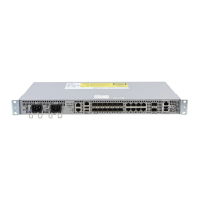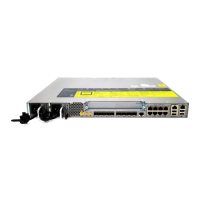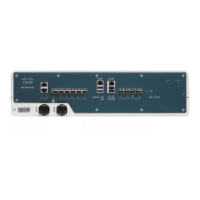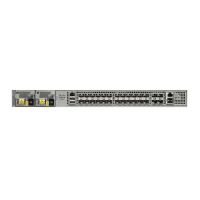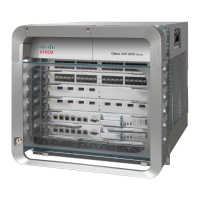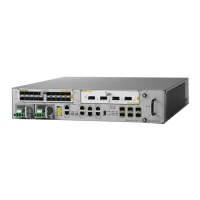•
Marks packets by setting the ATM Cell Loss Priority (CLP) bit, Frame Relay Discard Eligibility (DE)
bit, IP precedence value, IP differentiated services code point (DSCP) value, MPLS experimental value,
and Quality of Service (QoS) group.
Benefits
Bandwidth Management Through Rate Limiting
Class-Based Policing allows you to control the maximum rate of traffic transmitted or received on an interface.
Class-Based Policing is often configured on interfaces at the edge of a network to limit traffic into or out of
the network. In most Class-Based Policing configurations, traffic that falls within the rate parameters is
transmitted, whereas traffic that exceeds the parameters is dropped or transmitted with a different priority.
Packet Marking
Packet marking allows you to partition your network into multiple priority levels or classes of service (CoS).
A packet is marked and these markings can be used to identify and classify traffic for downstream devices.
In some cases, such as ATM Cell Loss Priority (CLP) marking or Frame Relay Discard Eligibility (DE)
marking, the marking is used to classify traffic.
•
Use Class-Based Policing to set the IP precedence or DSCP values for packets entering the network.
Networking devices within your network can then use the adjusted IP precedence values to determine
how the traffic should be treated. For example, the Weighted Random Early Detection (WRED) feature
uses the IP precedence values to determine the probability that a packet will be dropped.
•
Use Class-Based Policing to assign packets to a QoS group. The router uses the QoS group to determine
how to prioritize packets within the router.
Traffic can be marked without using the Class-Based Policing feature. If you want to mark traffic but do not
want to use Class-Based Policing, see the "Marking Network Traffic" module.
Packet Prioritization for Frame Relay Frames
The Class-Based Policing feature allows users to mark the Frame Relay DE bit of the Frame Relay frame.
The Frame Relay DE bit is one bit and, therefore, can be set to either 0 or 1. In congested environments,
frames with the DE bit set to 1 are discarded before frames with the DE bit set to 0.
Packet Prioritization for ATM Cells
The Class-Based Policing feature allows users to mark the ATM CLP bit in ATM cells. The ATM CLP bit
is used to prioritize packets in ATM networks. The ATM CLP bit is one bit and, therefore, can be set to either
0 or 1. In congested environments, cells with the ATM CLP bit set to 1 are discarded before cells with the
ATM CLP bit set to 0.
Restrictions
•
To use the set-clp-transmitaction available with this feature, the Enhanced ATM Port Adapter (PA-A3)
is required. Therefore, the set-clp-transmit action is not supported on any platform that does not support
the PA-A3 adapter. For more information, see the documentation for your specific device.
QoS: Policing and Shaping Configuration Guide (Cisco ASR 920 Series)
2
Class-Based Policing
Benefits
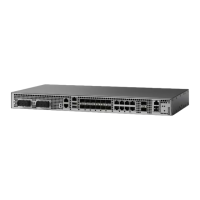
